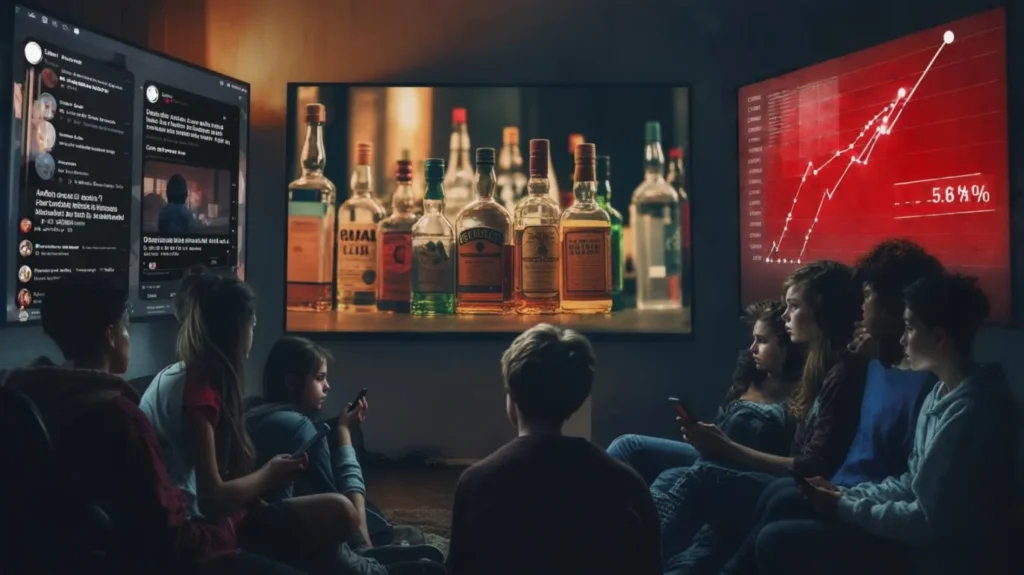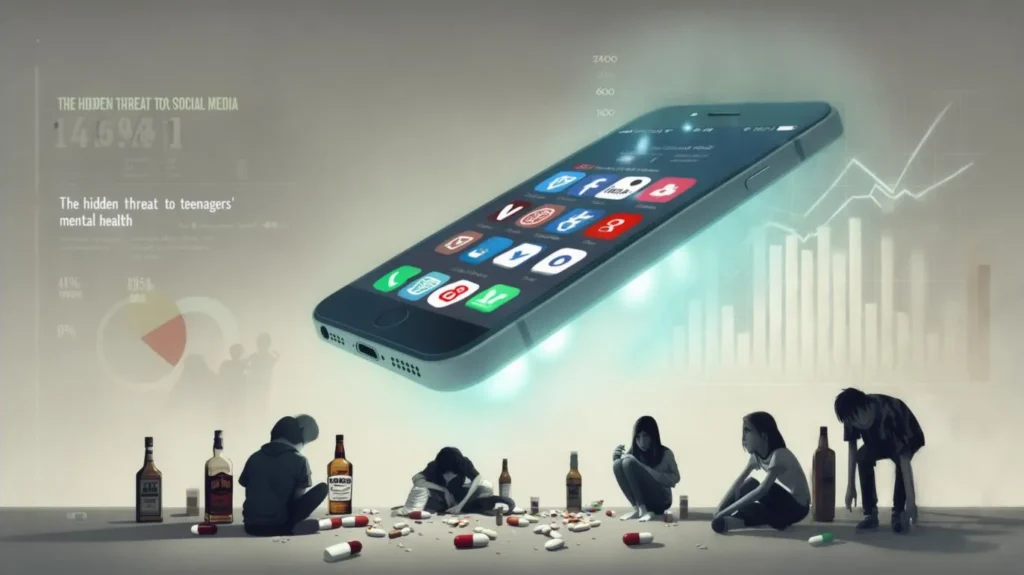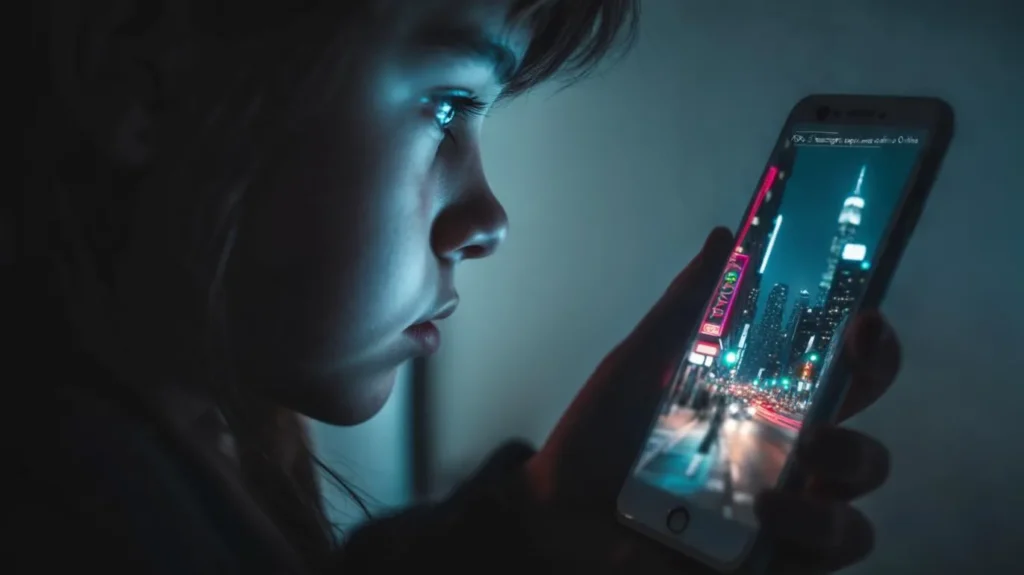Table of Contents

Recent research from Germany indicates that platforms such as TikTok, Instagram, YouTube, and video games present a more significant threat to adolescents compared to alcohol and cannabis. This study highlights the disturbing prevalence of severe addictive behaviors associated with digital media among teenagers.
Dr. Rainer Thomasius, the medical director of the German Center for Addiction in Childhood and Adolescence at the University Medical Center Hamburg-Eppendorf, which conducted the study in collaboration with the health insurance company DAK, stated, “We are facing a tsunami of addiction disorders among young people that I believe we are underestimating.”
Startling Statistics
The study revealed that more than a quarter of individuals aged 10 to 17 exhibit dangerous or excessive use of social media, with around 4.7% classified as addicted to these platforms, according to experts. Thomasius commented to the German news agency (dpa), “The rates of problematic social media usage are five to fifty times higher compared to hazardous consumption of cannabis and alcohol in this age group.”
Although social media use has an indirect effect on the central nervous system, unlike alcohol or cannabis, it still produces detrimental effects on what is scientifically recognized as the “brain reward system.”
Effects of Excessive Use
Thomasius explained that in both cases, there is a risk of addiction characterized by an insatiable desire for more engagement and a loss of control. He pointed out that “the considerable amount of time dedicated to social media applications results in neglecting other aspects of life.” This uncontrolled behavior can lead to severe outcomes for teenagers, often causing academic performance to decline, which may result in failure. Additionally, it can lead to social isolation, loss of interest in recreational activities, and conflicts within the family.
Gender Differences in Impact
The findings show that boys are particularly affected, with 6% meeting the criteria for problematic social media use, while the figure for girls is around 3.2%. Thomasius suggests that girls typically have stronger social skills during adolescence and engage in socially adaptive behaviors, which help them isolate less than boys a critical factor in susceptibility to severe addiction.
The line between risky and problematic social media use is not always evident. He noted that common early signs include declining academic performance and a lack of interest in schoolwork. However, adolescent crises or emotional distress resulting from peer pressure can also contribute to these problems.

Understanding Problematic Use
Social media use is categorized as problematic when its symptoms continue for at least 12 months. The study specifically chose the 12-month timeframe to avoid premature diagnoses and differentiate between transient adolescent challenges.
The Role of Parents
Thomasius emphasizes the need for parental intervention before addiction takes hold if young individuals engage dangerously with social media. It’s essential for parents to trust their instincts and foster healthy relationships with their children.
In addition to consistently regulating both the time spent and content consumed on social media, it is also crucial for parents to show interest in their children’s online activities. “They need to offer guidance. They should be good educators and supervisors,” Thomasius explained.
However, many parents feel overwhelmed by current social media dynamics and are unsure of how to manage them. If parents wish to effectively guide their children’s social media usage, they have much work to do.
Thomasius noted that parents need media literacy and a dedicated approach to educating their children. “This is a process that requires time, patience, and a higher level of understanding than your children, particularly concerning media risk assessment.”
Many parents struggle and are unable to exhibit these necessary skills. About 40% do not pay adequate attention to limit their children’s social media usage time, while a quarter of parents do not monitor the content their children access online. Thomasius concludes, “These are truly concerning results.”
The Long-Term Consequences of Digital Addiction
The ramifications of excessive social media usage extend beyond immediate behavioral issues. Adolescents deeply engaged in digital media often experience long-term physical and mental health issues. Reports indicate rising levels of anxiety and depression among teenagers who are compulsively connected online. The constant comparison to curated and filtered lives of peers can lead to feelings of inadequacy and low self-esteem. Consequently, this digital addiction can contribute to a cycle of poor self-image, further entrenching teenagers in unhealthy habits that are difficult to break.

The Need for Comprehensive Education
To combat the growing threat of social media addiction, comprehensive education on digital literacy and mental health is essential. Schools should implement programs that teach students about the impacts of social media on their well-being, encouraging critical thinking and responsible usage. By integrating discussions on online behaviors into the curriculum and promoting healthy lifestyle choices, educational institutions can empower students to develop healthier relationships with technology. This proactive approach can help mitigate the adverse effects of social media and foster resilient young individuals capable of navigating the digital landscape effectively.
Encouraging Positive Engagement
Beyond just limiting screen time, parents and guardians should focus on fostering positive engagement with technology among teens. Encouraging children to participate in educational or creative online activities can help shift their focus from passive consumption to active involvement. Creating family guidelines for social media use such as designated tech-free times or encouraging group activities that involve technology can also promote healthier habits. By endorsing positive interactions and setting boundaries, families can ensure that their children use social media as a tool for connection and creativity rather than as a source of addiction or distress.
The Need for Greater Awareness
Given the widespread influence of social media on teenagers, it is essential to raise awareness among parents, educators, and policymakers about the potential risks associated with excessive use. Schools should implement programs that educate students about responsible social media practices and the signs of addictive behavior. By fostering an environment of open discussion around the impacts of digital media, communities can create a support system for adolescents navigating these challenges.
Strategies for Healthy Engagement
To combat the adverse effects of social media, it is vital to establish healthy boundaries for usage. Encouraging teenagers to engage in offline activities—such as sports, hobbies, and face-to-face interactions—can help mitigate the draw of digital platforms. Parents can set specific time limits for social media use and involve their children in choosing those limits. This collaborative approach fosters a sense of responsibility and critical thinking about their online habits.
Building Digital Resilience
Lastly, teaching digital resilience is key to helping teenagers navigate an increasingly complex online world. This includes empowering them with the skills to critically evaluate online content, recognize potential risks, and develop coping strategies when faced with peer pressure or negative experiences. By nurturing these skills, parents and educators can equip young people with the tools they need to use social media as a positive force in their lives, rather than a harmful one.
You Might Like : What is Blockchain and How It Works ?
